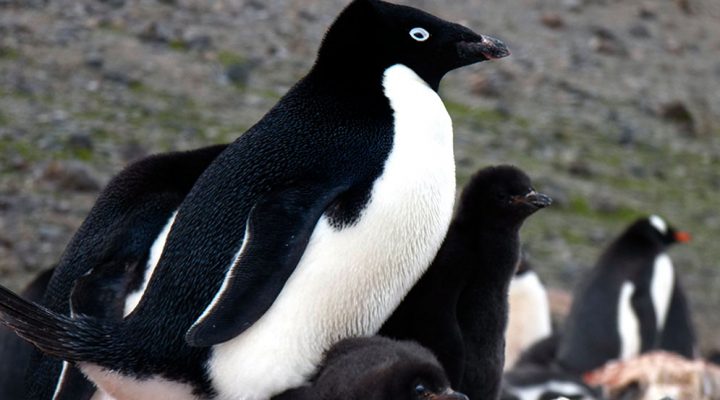EXACT AND NATURAL SCIENCES
Penguin medullary bone: a key to differentiating sexes in the fossil record
The study was conducted by CONICET scientists.
The study, which focuses on how to discriminate this aspect through the medullary bone of these birds, was recently published in Polar Biology, and was led by CONICET doctoral fellow at the Instituto de Investigación en Paleobiología y Geología (IIPG, CONICET-UNRN), Luis Garat. “The main topic of this research was to evaluate, from studies under a microscope, the variations in bone tissue between a male and a female Adélie penguin, currently residing on the Antarctic Peninsula. Studies of tissues analyzed by microscope are scarce, therefore, through this little-explored terrain we managed to create a new line of research. In order to enhance the knowledge in these birds, several cross sections were made in different parts of the skeleton, such as the wings, legs and ribs”, Garat explains.
The work represents the first report of medullary bone in penguins: a skeletal tissue that forms during egg laying and is found in the females of several groups of birds. If it is correctly identified, it can be used as a marker of reproductive activity or maturation, also serving to differentiate the female sex. “This tissue is temporary and helps the birds with the high calcium demands that the formation of the egg shells requires. The medullary bone can cover the marrow cavities and the trabecular spaces of the avian skeleton, although it is common to find the medullary bone in birds, prior to this research, there were no precedents where this type of tissue was recognized in penguins”, Garat indicates.
“In addition to recognizing the medullary bone, it was possible to identify a pattern in the medullary cavity that helps us differentiate the sex of the specimen,” adds the scientist. This is because the production of medullary bone is accompanied by internal erosion of the tissues, generating a characteristic pattern, that is, the male exhibits a medullary cavity well delimited by an internal circumferential layer, while in the female this layer is lost. ”.
The samples that were examined belong to the Museo de La Plata from the Ornithology collection of the Vertebrate Zoology Division and were processed in the IIPG ‘Thin Sections Laboratory.’ In the future, we plan to compare the data investigated with penguins from the Eocene epoch, which would allow them to solve other species classification problems that currently exist in the fossil records of these birds.
By Nahuel Aldir -Área de Comunicación del Instituto de Investigación en Paleobiología y Geología (IIPG, CONICET-UNRN)
